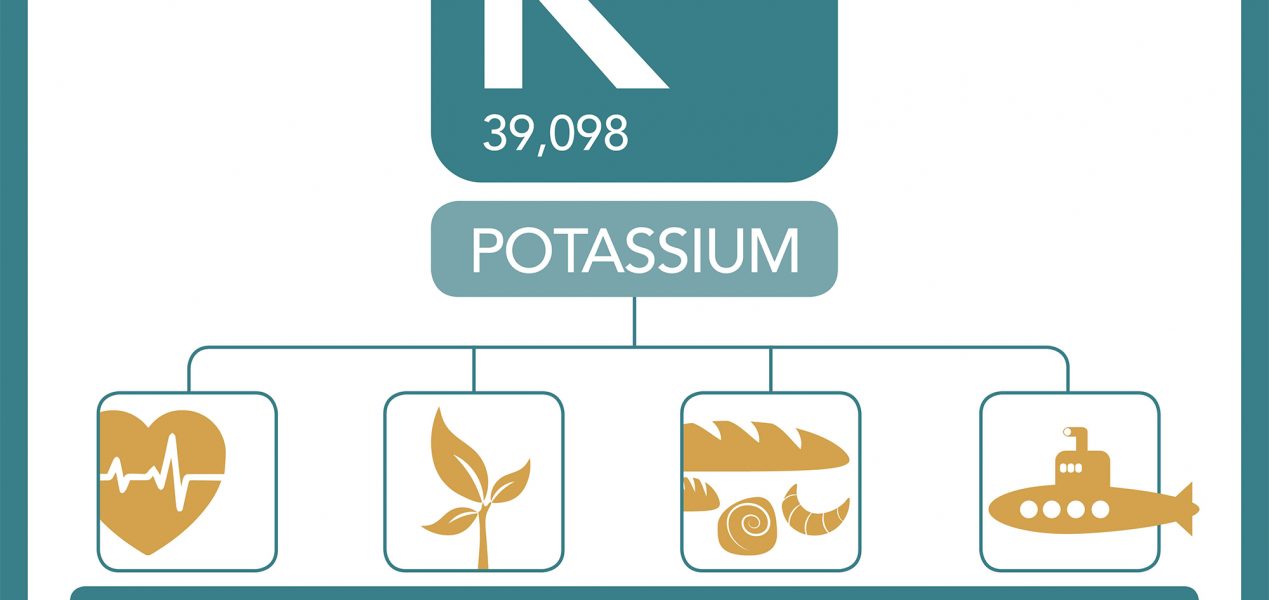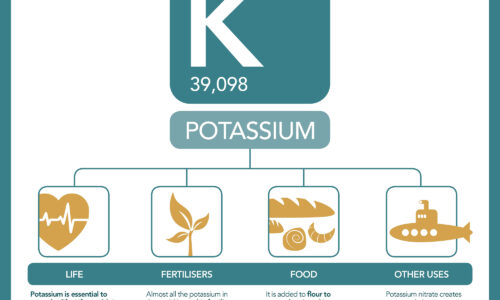Just starting with its symbol (K, from the German word Kalium), potassium shows itself to be a peculiar metal. It is so soft it can easily be cut with a knife and so lightweight that it floats in water, despite violently reacting with it.
Ever since it was isolated in 1807, it has become an essential element. No other material can replace it: “As a metal, its industrial use is scarce, but it gives rise to numerous, highly useful compounds” explains Noemí Badia, from Grupo Barcelonesa.
More than 50 chemical compounds are derived from potassium, and each features a different application , though used in fundamental, everyday instances to the point that life wouldn’t exist without it. It is essential to all human diets and to plant growth.
One of the main uses in industry for chemical derivatives of potassium is as fertiliser, with an emphasis on potassium chloride, sulfate, and nitrate in this regard. On the other hand, potassium chlorate is used to kill weeds.
Another field where it stands out is the food industry. Potassium bromate is added to flour to strengthen it and increase density, and potassium bisulfate is used as a preservative for foods, wine, and beer. However, bisulfate is also used to clean and bleach fabrics and to dye leather.
The list of derivatives and uses for this chemical element is long and varied: potassium nitrate is used to make tempered glass, potassium cyanide is used in gold mining, and potassium superoxide makes it possible to supply oxygen to spaceship and submarine crews.
Barcelonesa sells over 45 potassium derivative products, out of which Noemí Badia highlights potassium hydroxide (potash): “KOH participates in multiple industrial processes, including the production of potassium carbonate, fertilisers, soaps, electrotyping, herbicides, catalysts, oxidising agents, medications, alkaline batteries, and many more”, she describes.
Luckily for the industry, this element is present in tremendous amounts in nature (it is the seventh most abundant metal in the Earth’s crust), and there is no risk of shortage: it is mainly found in igneous rock, lutite, and sediment, in addition to mineral deposits of water-soluble compounds such as sylvite.


